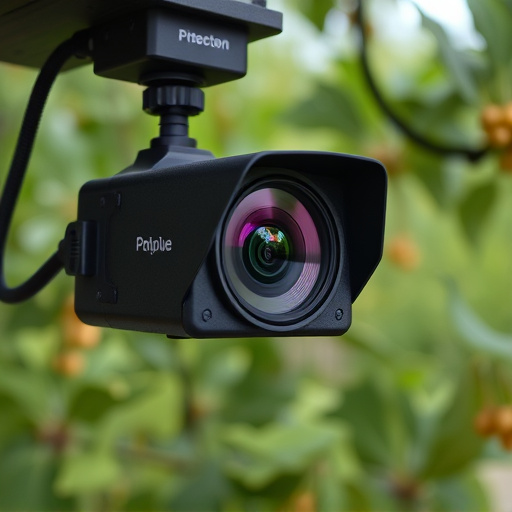Wireless hidden cameras in apartments have evolved as powerful tools for landlords, offering remote surveillance through discreet installations like light bulbs or wall plugs. They provide real-time video footage for security and tenant screening but raise legal privacy concerns, especially in tenant spaces. Effective use requires compliance with local laws, open communication, and transparency. While these cameras are common in today's digital age, tenants must be aware of their rights and vigilant against unauthorized devices through regular inspections and counter-measures to protect their privacy.
In today’s digital era, privacy concerns have escalated, particularly within rental properties. This article delves into the world of wireless hidden cameras for apartments, exploring their understanding, legal implications, and common placement in rented spaces. We’ll guide you through identifying potential surveillance spots and provide essential tips to detect and prevent these devices. Stay informed about your rights and be vigilant to safeguard your personal space from unexpected hidden eyes.
- Understanding Wireless Hidden Cameras for Apartments
- Legal Considerations and Privacy Concerns
- Common Secret Surveillance Spots in Rental Properties
- Detecting and Preventing Hidden Cameras in Your Apartment
Understanding Wireless Hidden Cameras for Apartments
Wireless hidden cameras for apartments have become increasingly sophisticated, offering landlords and property managers a powerful tool for monitoring their rental properties. These tiny yet advanced devices can be easily installed in various locations without drawing attention, providing real-time video footage and peace of mind. They are designed to blend seamlessly into the environment, whether it’s a subtle camera disguised as a light bulb or an unassuming wall plug, making them ideal for unannoyed surveillance.
Landlords benefit from wireless hidden cameras’ convenience and discreteness, allowing them to remotely access live feeds and recorded footage for security, tenant screening, or even insurance purposes. With the right setup, these cameras can capture high-quality video, detect motion, and send alerts, enabling efficient property management and potential crime prevention.
Legal Considerations and Privacy Concerns
The installation of wireless hidden cameras in rental properties is a complex issue, fraught with legal and privacy considerations. While landlords have certain rights to monitor common areas for safety and security purposes, they must adhere to strict regulations regarding the placement and use of surveillance equipment. In many jurisdictions, the placement of hidden cameras in tenant spaces, such as apartments, without explicit consent is illegal and constitutes a severe breach of privacy.
Tenants enjoy a reasonable expectation of privacy within their rented accommodations. Installing wireless hidden cameras in these areas without their knowledge or approval can lead to legal repercussions, including civil lawsuits for invasion of privacy. It’s crucial for landlords to prioritize open communication and transparency with tenants regarding security measures, ensuring compliance with local laws and respecting the personal boundaries of those who reside in their properties.
Common Secret Surveillance Spots in Rental Properties
In today’s digital era, wireless hidden cameras for apartments have become a prevalent tool for both landlords and tenants alike. These discreet devices are often installed in areas that might go unnoticed by the average person but offer strategic vantage points for surveillance. Common secret surveillance spots include door handles, light switches, smoke detectors, and even kitchen appliances like fridges or ovens. These locations provide easy access to live feeds or recorded footage, allowing users to monitor activities within the rental property.
Moreover, wireless hidden cameras are often tucked away in corners or behind furniture to capture unobstructed views of common areas and private spaces. Landlords might use them for security purposes, while tenants could employ these devices for personal safety or to protect their belongings. However, it’s essential to remember that the installation and use of such cameras must adhere to local privacy laws and regulations to avoid legal repercussions.
Detecting and Preventing Hidden Cameras in Your Apartment
Detecting hidden cameras, especially wireless hidden cameras for apartments, is a growing concern for tenants. While landlords have legitimate reasons for installing surveillance equipment, it’s crucial to know your rights and be vigilant about potential privacy breaches. Regularly inspecting your apartment can help; look for any unusual devices or components that might indicate the presence of wireless hidden cameras. Pay close attention to areas like corners, ceiling tiles, and behind furniture, as these are common hiding spots.
To prevent unwanted surveillance, consider employing counter-measures such as using UV light detection tools or specialist camera detectors designed to identify hidden lenses. Additionally, keeping your space secure with locked doors and windows, and using privacy films on windows and mirrors, can significantly reduce the risk of wireless hidden cameras being installed without your knowledge.
While wireless hidden cameras for apartments can raise privacy concerns, understanding common surveillance spots and legal considerations is key to protecting your space. By being aware of potential hidden camera locations, you can take proactive steps to detect and prevent any unauthorized devices, ensuring a safer and more secure rental experience. Stay vigilant, stay informed, and protect your personal privacy at all times.
